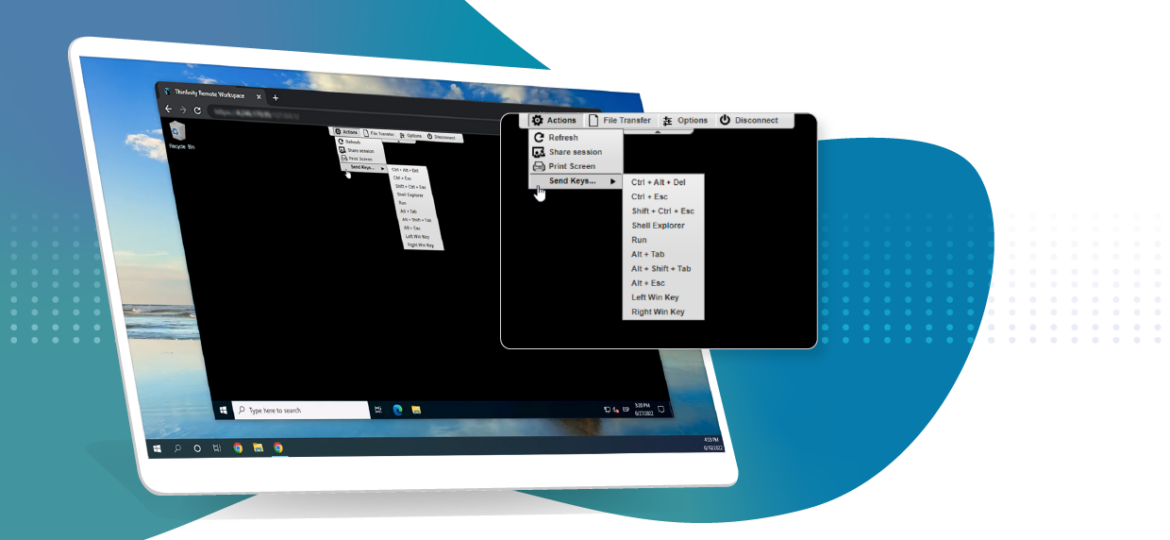

Besides being a powerful cross-device, cross-browser remote access tool, Thinfinity Configuration Manager also excels in its integration capabilities and its flexible and easy customization.
A little known fact for those working with Thinfinity Remote Workspace is the existence of customSettings.js. This file provides a way to easily define some global parameters for all remote access connections, regardless of the selected profile. This file, located in the webrdp folder of the installation directory, is an editable javascript that contains a global variable called customSettings.
The customSettings variable uses the JSON format to define a collection of attribute/value pairs with special parameters that are not available in the profile settings:
Atribute |
Default Value |
Description |
|---|---|---|
| createToolbar | true | Enables the Thinfinity Workspace Toolbar creation. |
| toolbarVisible | false | Defines the initial toolbar visibility. |
| checkBeforeWindowsClose | true | When false, bypass the confirmation popup triggered in the on. |
| noSsnDialog | false | Disables the share session popup display. |
This collection can be extended with any other attribute of the connect JSON parameter, except for those that are relative to the connection —user, password and computer—. When extending the collection, the overrideDefault attribute must be set to true, as specified in the Thinfinity Remote Workspace connect method reference:
// GetThinRDP(serverURL, runRemote)
// Creates a new ThinRDP instance
// serverURL: substitute with the ThinRDP server URL (http[s]://[URL - IP]:port/)
// runRemote: use to set ThinRDP mode
// -- false-> local (renders into this page)
// -- true-> remote (posts connection data to postPage ("connection.html" as default)
mythinrdp = GetThinRDP("", true);
mythinrdp.connect({
targetWindow: "rdpwindow",
centered: true,
overrideDefaults: true,
...
...
...
}
When starting a connection, Thinfinity Remote Workspace merges this parameter list with the profile settings, overriding the profile attributes with the customSettings variable values. This is a powerful tool that needs to be used carefully. Therefore, it is recommended to use customSettings.js exclusively to set these special parameters, or when you need a centralized configuration to be shared among the totality of countless profiles.
Remember: defining the configuration in each profile is always safer, as well as clearer.
In conclusion, the customSettings global variable offers a way to quickly apply general custom settings that will affect all the connections. More details about this, such as how to customize the toolbar, will be explored in depth in a future post.
Have any questions? Contact us at [email protected] or leave a message on this same post.
Have any questions?
Book a call today to learn more about how Thinfinity can help your organization. We are always available to guide you and provide the best solution based on your specific needs.